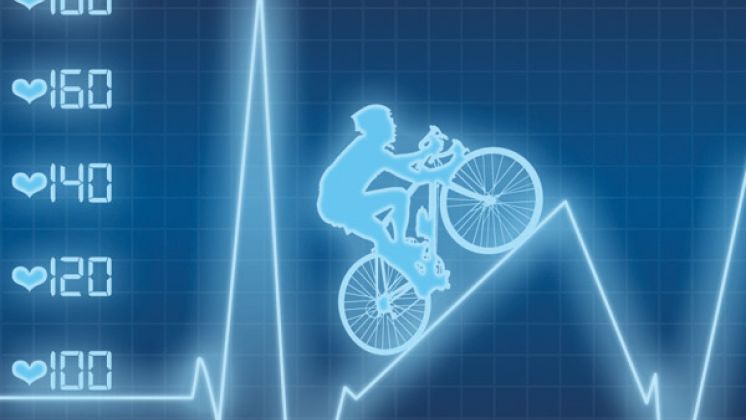
Your lungs are burning, your legs are too weak to support you and your heart’s beating so hard it feels as though it’s going to burst out of your chest. But you’re not ill – you’re getting fitter.
Sometimes you may go for a run, a ride or a swim just to blow away some cobwebs, de-stress from a tough day at work or recover from a big night out. That’s why so many people love exercise: it can make you feel better both mentally and physically. But if you really want to get fitter and faster, then you need to work a fair bit harder than you would on a mind-clearing jog.
The only way to become a better athlete is by pushing yourself out of your comfort zone. During these hard, maximum-effort sessions, when your heart is pounding, your chest is heaving and your legs are like jelly, you’re shocking your body into realising it’s not up to the job. And when you take some much-needed rest afterwards your cardiovascular system and muscles repair themselves, making you stronger, faster and fitter.
But forcing yourself out of your comfort zone isn’t just tough on your body: it can be hard to know how to do it at all, because it’s not just a matter of ‘run a bit faster’. So here are some of the most beneficial types of cardio sessions. With these methods you can start getting fitter right now.
Brick sessions
A brick session is when you do two different disciplines back to back, usually swimming then cycling, or cycling then running. This type of workout is often done by triathletes to prepare their bodies for the rigours of a race. It’s really hard to start the next discipline after giving your all on the last one, so these sessions are about replicating race conditions when you’re going to start out tired. But by practising you’re going to get better and faster.
Hill sessions
Sign up for workout ideas, training advice, reviews of the latest gear and more.
Why do hill sessions? Because hills make you strong. My races last almost two hours so it is vital that I’m strong enough to give my all until the finish line. Going up hills works your heart and legs much harder than training on the flat, and if you get good at beating the hills think how easy it’ll be on a lovely flat surface. It’s important not to smash yourself on the hills: keep it at a fast but consistent pace the whole way up and take it easy on the way down. I like doing ten lots of three-minute uphill runs, although I hate it when I think I’ve done all ten but my Garmin watch says otherwise. On the bike, try ten lots of five-minute climbs but stay in the saddle and concentrate on a smooth and consistent pedal action. It’s better to do ten good hill reps than two fast ones, three crap ones and then quit.
Threshold sessions
Oh, these are hard… but training at your maximum steady-state aerobic threshold – basically, the fastest you can go for a sustained amount of time – is one of the best ways to improve your speed and fitness. After a decent warm-up, gradually build up to your consistent top speed and try to maintain it for as long as you can, then take a short breather and repeat. Even if you can only keep it going for five minutes at first, stick at it and you’ll find you can go for longer. It’s useful to use a heart rate monitor in these sessions to get your pace right – you should aim to train at 85 to 90 per cent of your maximum heart rate.
Interval sessions
Sometimes called ‘fartlek’, which is Swedish for ‘speed play’, interval training requires you to run at different paces during the session. For example, go all-out, then jog to recover, then push it a bit harder, then sprint again – it’s a great way to shock your body into getting fitter because it has no idea what it’s required to do. It just keeps it guessing the whole time. You can either do a set amount of time for each speed or go completely random and change speeds with every lamp-post or landmark you go past.
Race-pace sessions
These are exactly what you’d think: you try to replicate your race pace during the session – which makes them pretty bloody tough. If you take every session too easily then when you push it in a race you’re going to be in trouble. But the more you train at a high intensity, the better you’ll cope on race day. And that’s what training is all about, right?
For more top training advice, subscribe to Men's Fitness. We'll give you five issues for £5. For more from Mr Don, go here.
